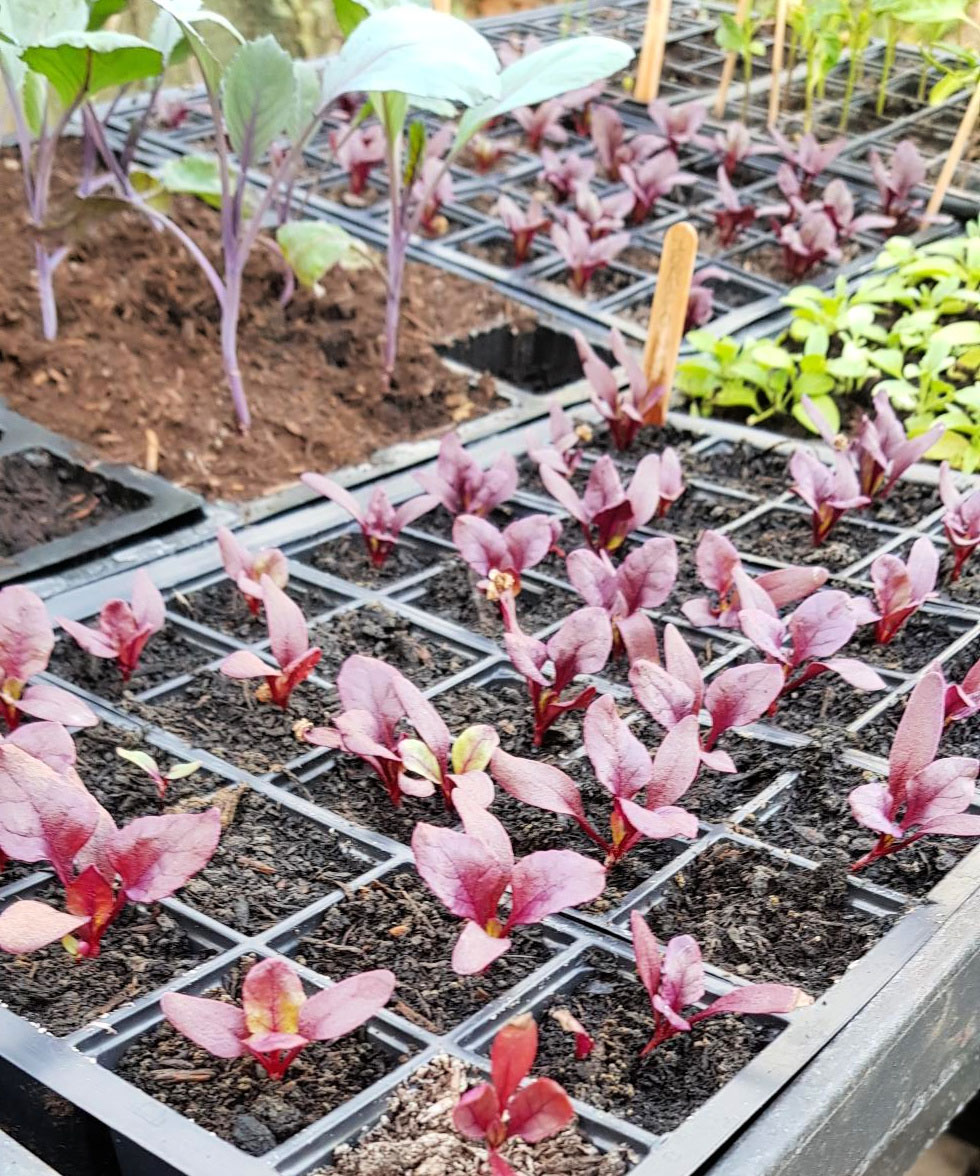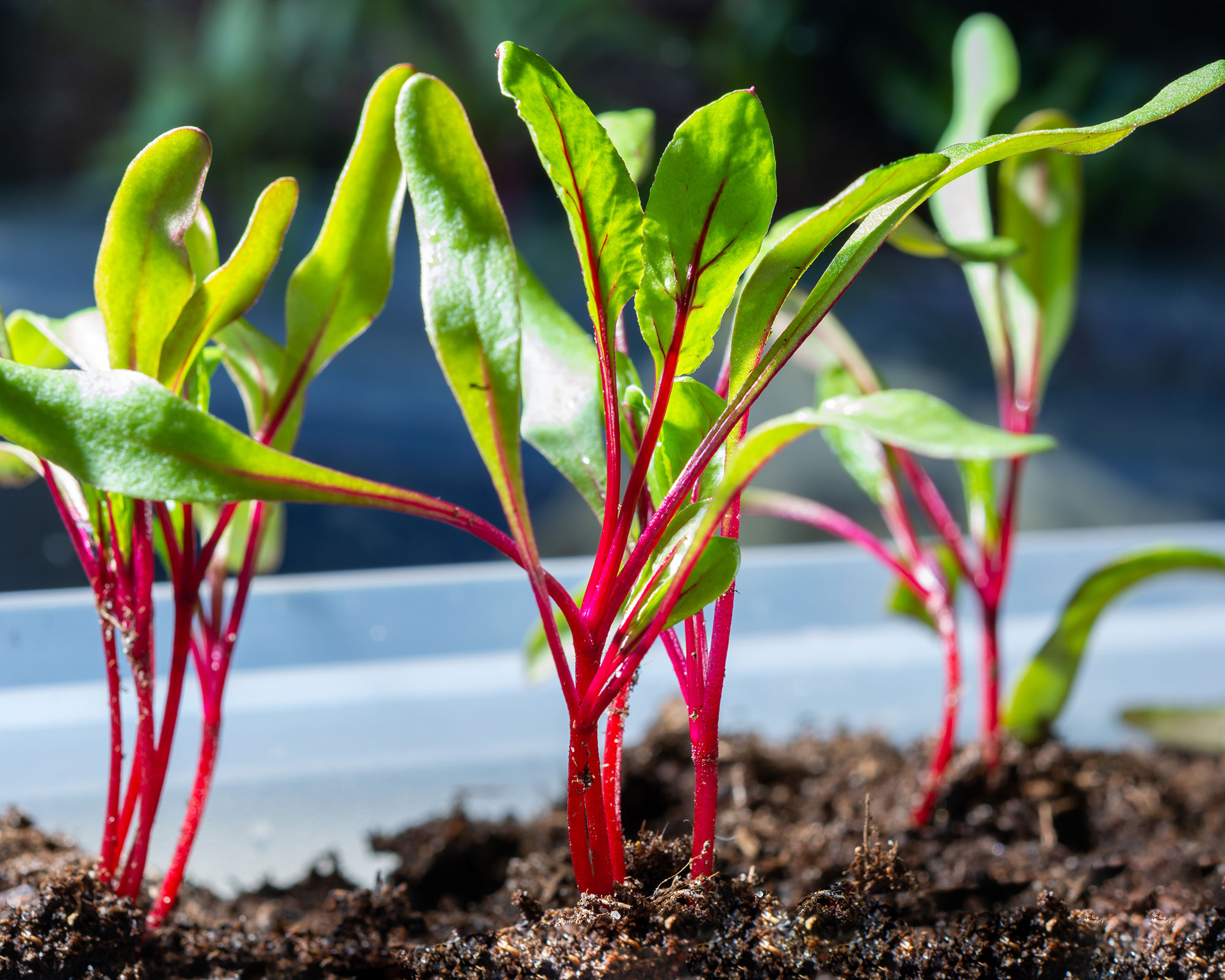How to grow beets – and where to plant them
Learn how to grow beets and enjoy a successful growing season of this tasty, nutritious vegetable


If you know how to grow beets, you’ll quickly discover they take up little space and require minimal fuss, making them the ideal vegetable for most backyards – and also a great vegetable to grow for the beginner gardener.
Regarded as a ‘superfood’, this highly-nutritious vegetable is high in fiber and packed with vitamins. Beets, or beetroot, contain more iron than most other vegetables, including spinach. So, keep yourself fighting fit and learn how to grow beets as part of your vegetable garden ideas.
How to grow beets – where and when to grow them
Beets are a root vegetable that hail from the same family as chard and spinach. Although a biennial plant, they are grown as an annual for both their root and leaf. They come in a large range of different colors, shapes and sizes, and are a good vegetable to try if you're planning a kitchen garden.
Beets are a cool-season crop that enjoy growing in a sunny position. Learn when to plant beets to enjoy a harvest that can be preserved, frozen and stored for up to three months. USDA hardiness zones 2-10 are the ideal climate for growing beets.
Beets thrive in temperatures from 50°F to 65°F (10-18°C), need at least six hours of sunlight a day, and can take up to two months to reach harvest.
'Growers in milder climates have better luck with growing beets, but you can grow beets almost anywhere in the United States and Canada if you plant at the right time,' says Joe Gardener host of award-winning gardening television show Growing a Greener World.

What is the best way to grow beets?
The easiest and quickest method for growing beets is direct sowing.
Design expertise in your inbox – from inspiring decorating ideas and beautiful celebrity homes to practical gardening advice and shopping round-ups.
Their seeds are actually clusters of seeds, which can produce 3 or 4 seedlings. They prefer a rich soil with plenty of drainage, so the more well-rotted organic matter, such as homemade compost, you can incorporate the better.
Sow three seeds spaced 4in (10cm) apart, and 1in (2.5cm) deep. Space rows about
12in (30cm) apart.
Commence sowing two weeks before the last frost, which may be from March or April depending on the region where you live, and continue succession sowings every two to three weeks until temperatures hit 80°F (26°C).
As we reach late summer into fall, resume direct sowing until the arrival of the first frost.

How long does it take beets to sprout?
Germination should occur and beets should sprout within 21 days.
Once seedlings are established, thin them out to three inches apart, allowing the remaining crop to grow on.
Can I sow beets indoors?
You can sow beets indoors to get them off to an earlier start.
Sow seeds in a heated greenhouse as part of your greenhouse planning, five weeks before frosts become less frequent. Use seed cell trays with a well-drained starter mix compost, and sow one to three seeds per cell.
Seedlings will be ready to transplant outside into their final growing positions in five to six weeks. There is no need to thin them, as the whole module can be planted as one.

Can beets be grown in pots?
Beets can be grown in pots as part of your vegetable garden container ideas. Containers should have the depth of at least 12 inches, allowing the root plenty of depth to burrow down and develop.
Beets grown in pots will need more watering compared to seeds directly sown into open soil, as containers dry out quicker during warmer months.
Once seedlings emerge, thin them out to allow the remaining crop to successfully grow on. Ensure the container is placed somewhere sunny, and add an organic feed as the season progresses. Beets grown in pots in this way are a good option for small vegetable garden ideas.
'I have used an old zinc cistern in a courtyard garden to grow a few choice varieties, enriching the soil with home-made garden compost and sowing the seeds direct into the surface', says celebrity gardener and expert plantswoman Sarah Raven.

How do you know when beets are ready to harvest?
You can usually harvest beets within two months from when they were sown. Ideally, they should be about the size of a golf ball. If you leave them in the ground too long they can become woody tasting.
Remember, the leaves also can be eaten raw, cooked or added as a garnish, and they could also be grown as microgreens.

Are beets easy to grow?
Beets are among the easiest vegetables to grow, but they can be prone to pests and diseases so you need to know how to deal with these when you learn how to grow beets.
- Leaf miner can cause minor damage to the foliage, but the affected foliage can be removed without hampering the growth of the vegetable.
- Aphids suck the sap of young plants, resulting in the leaves curling and turning yellow. Often spraying them off with a hose is enough to dissuade them from returning.
- Try companion planting beets with beneficial crops to help deter pests and attract pollinators
How often should beets be watered?
Beets are a thirsty crop, so maintain a regular watering regime. Keep the soil moist, and add a mulch to contain moisture – you could try no-dig gardening methods to improve the soil's water retention and health. As they are hungry crops, fertilizing beets will also improve your harvest.
A hot spell of weather can stress the plant if it’s not getting enough water, forcing the beet to bolt – or flower – and set seed early. Therefore, consider sowing bolt-resistant varieties, particularly if you live in a warmer region.

Recommended varieties of beets to grow
Some of the more popular varieties of beets to grow are:
- ‘Chioggia’ – is a sweet tasting root, which when sliced reveals red and white rings
- ‘Cylindra’ – has a long, dark red root, which is often grown for pickling
- ‘Burpee’s Golden’ – is a sweet, golden colored root
- ‘Early Wonder’ – an heirloom variety that produces red, round beets
Beets have a long growing history – the roots and leaves were eaten as a food and medicine across Ancient Egypt, Greece and Rome. With so many varieties to choose from, once you know how to grow beets, they will quickly become a staple in your growing garden.

Ade Sellars is a gardener, presenter and gardening writer with a passion for growing his own food in his kitchen garden. He grows his own organic fruit and veg in his kitchen garden and now runs his own gardening business. This year he will also be giving talks at gardens around the country.